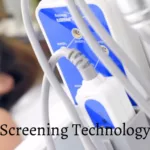Technology is at its pinnacle and new telepresence technologies have revolutionized the video communications into nearly an in-person experience, but it still is highly expensive.
The field of IT is at its peak right now. Every now and then we come across a different technology that has successfully benefited either one aspect of our lives in an optimal manner. Telepresence, similarly seems to be succeeding. These systems are a combination of room-sized audio, video and ergonomic design to stimulate live interaction. They are brought into existence by Buck Rogers and George Jetson bridging the communication gap the world is experiencing today.
But the systems are highly expensive starting at $30,000. The high definition cameras, integrated sound and video screens and the required infrastructure does not come cheap. Telepresence today combines updated compression and video protocols in a high-definition TV with conventional factors of human engineering to add precisions of personal conversation such as body language, voice tone and eye contact to traditional video. These systems require bandwidth that make web-based usage a big problematic question.
What is required?
New telepresence technologies provides a real-life experience requiring five basic things:
- High-definition, life-size video
- Camera technology simulating eye-contact
- High quality sound allowing multiple conversations
- Enough bandwidth
- Room design simulating an in-person meeting
All systems connected must meet the requirements or you will have to compromise on the overall quality.
It is a private cloud
There has been a misconception that telepresence system is used over a web. What is telepresence now is different what it used to be earlier. Most vendors have now done their job outlining bandwidth requirements and recommended private clouds for communication. Nevertheless, they still revolve around the Internet issue.
It is not that vendors are not willing to address this issue but itself is an inherent problem that is difficult to tackle.
Application
Applications of telepresence includes working in extreme climates, high or low pressures and in other conditions that pose serious hazards to human life. It may also be used to diffuse bombs, handle toxic materials and carry out difficult and dangerous missions of military. It is means of true teleporting for all. It has even been suggested as the right method to perform surgeries by remote controls. But one grave problem with long-distance telepresence is that the data and control signals do not travel faster than speed of light in free space. The practical distance over which telepresence today can be maintained is automatically restricted.
Conclusion
Implementing a telepresence system is not an easy task given its high cost and relatively low level of interconnectivity. It may even set you up for failure. But when done correctly, it can bring unprecedented changes in face-to-face communications.
However, the real potential of telepresence is still in question. It could be large, but what about the cost factor. Can they be real effective on the custom technology? This question is subjected to pragmatism. Nevertheless, in theory, telepresence technologies are something that will continually evolve this specific area.








